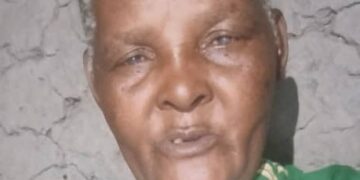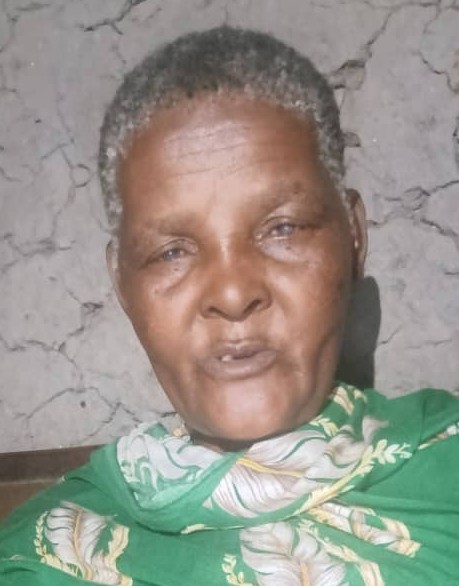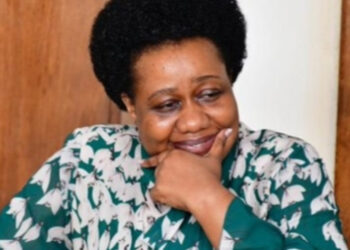By Ritah Atukwatse,
MITOOMA,
When Ntegyerize Allen tells the story of how she cheated death, her voice trembles, not from fear, but from memory. It’s been 25 years since she slipped into the rushing waters of River Rwitanzi in Mitooma District, but the images remain vivid: the sharp rocks, the cold grip of water, the cries of those who came to her rescue, and the firm hands that pressed her belly until water gushed from her mouth.
It was the year 2000. Allen, then a sprightly woman in her 50s, was returning from an okwaruka -“Customary Marriage”, a celebratory gathering hosted by her brother. There was no bridge to cross the swollen river. Just laughter, risk, and hope. One by one, men took brave leaps across the narrow stretch. Allen, fueled by a mix of excitement and urgency, decided to try. But her umbrella slipped into the river. Reflexively, she followed it.
That single moment became a lifetime of consequence.
She struck her face on submerged stones, losing two teeth instantly. “I swallowed a lot of water,” Allen recalls, her gaze distant. “I couldn’t breathe. I thought I was dying.”
Her saving grace came not from any ambulance or trained medic, but from a traditional method passed down through generations. A group of nearby men; Bakizire, Tumusime, and others whose names time has partially blurred, lifted her out and began pressing her abdomen rhythmically. A gush of river water burst from her mouth. She had survived.
Today, that crude yet effective intervention stands as a fading symbol of community survival tactics in rural Uganda, where formal emergency response systems remain absent.
Now in her 80s, Allen’s sight is severely impaired, a lasting consequence of that near-drowning experience. She’s toothless and frail. Sitting under the shade of a mango tree near her homestead, she speaks softly, yet with determination.
“We didn’t have bridges then. We still don’t,” she says. “If those men had not known what to do, I would have died.”
The method they used, pressing the stomach to expel ingested water is not medically endorsed, but in many rural communities, it has been the first and only line of response to drowning. In Allen’s case, it worked. But not without cost.
“I lost my sight gradually after that day,” she says, pointing to her cloudy eyes. “And no one ever treated me. I’m still waiting.”
A World Health Organisation report stated that about 300,000 people around the world drowned in 2024, and declared it a global crisis, with children being the most vulnerable.
Drowning is a significant public health issue in Uganda, with over 3,000 lives lost to annually, an average of 9 people every day. Statistically, drowning is the fourth leading cause of death after lower respiratory infections, malaria and diarrhoeal disease among children aged between 1-4 years (24%), third leading cause of death among children aged 5 -14 (19%) and 12th among teenagers and youth aged 15 to 29.
Drowning can happen anywhere from large water surfaces like lakes, rivers, oceans and ponds to homes in water basins, and affects everyone despite their age.
River Rwitanzi, though narrow, is deceptively dangerous, especially during the rainy season. Children, pregnant mothers, and the elderly are most vulnerable. For years, local leaders have pleaded for a bridge, but Ntegyerize says promises have remained just that promises.
“Every election, they come and say, ‘We shall build the bridge,’” she chuckles faintly. “But the river is still there, and people are still crossing it the way I did.”
Ntegyerize who now lives with her grandchildren, dependent on them for movement and daily care. Her message to government is simple: build bridges, not just of concrete, but of care.
“I ask the government to help us by building bridges and also support me with treatment for my eyes,” she says. “It’s been 25 years ever since I lost my sight and my teeth.”
Elly Rutagyeregwa, caretaker to Ntegyerize, emphasizes the need to extend drowning prevention efforts to rural communities.
“Cautionary measures such as swimming lessons, water safety education, drowning prevention initiatives, and first aid training should be integrated into rural areas through the existing Village Health Teams (VHTs). This will not only help prevent drowning but also ensure immediate care for victims,” he said.
Ntegyerize’s story is more than a personal memory. It’s a living reminder that in places where health systems are distant and roads end at riverbanks, communities must rely on tradition, luck, and each other. But Ntegyerize believes it’s time for more.
“Don’t wait for someone else to drown before you act,” she pleads.
In her words lies a truth few policymakers see, one that flows as steadily and silently as River Rwitanzi itself.








































